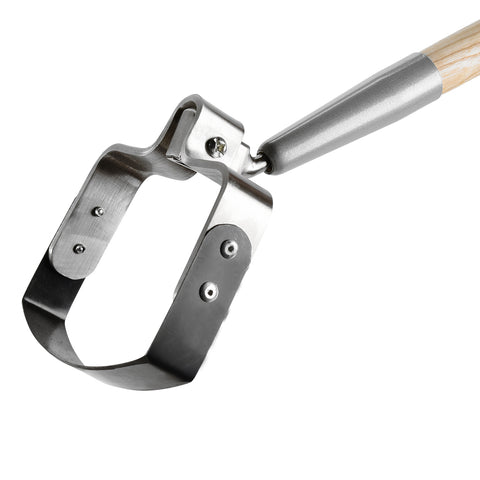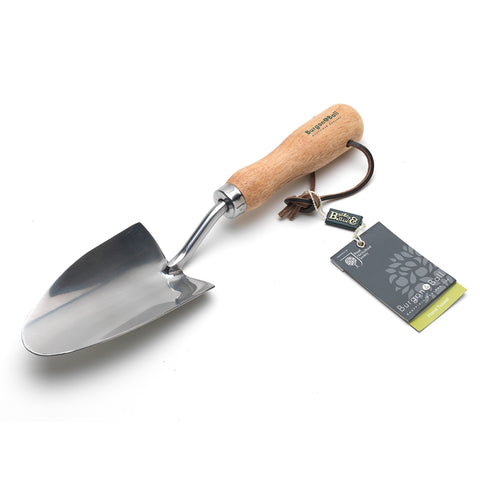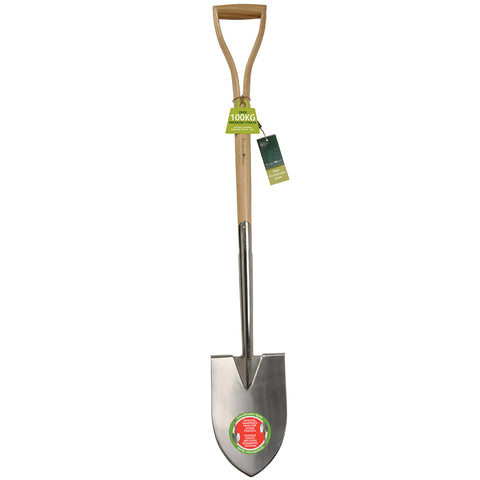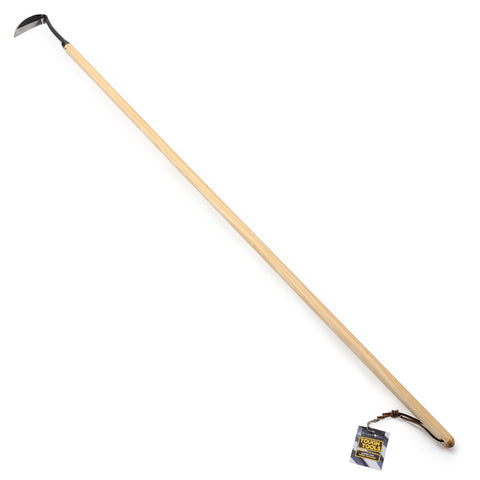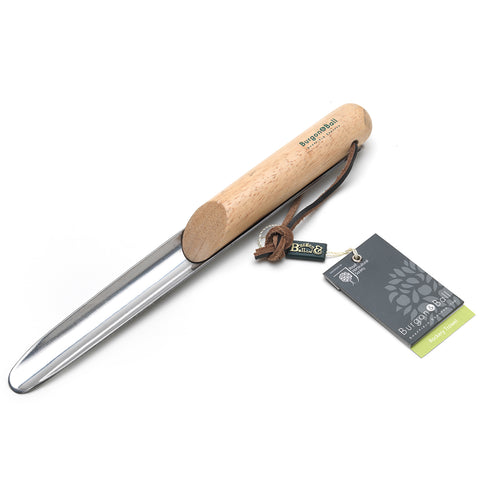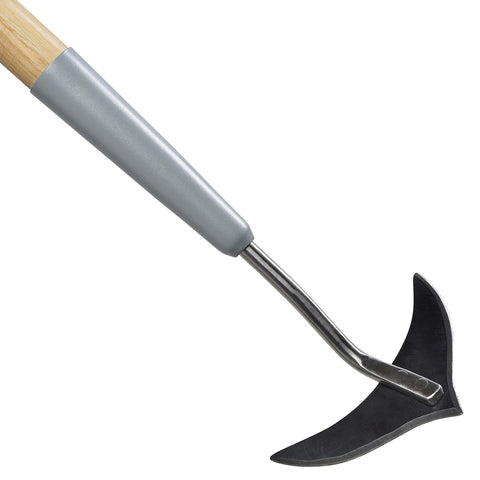In this challenging year, we've appreciated time in the garden more than ever. It's been a place of escape, of recharging, and connecting with nature. Bliss.
If your garden has been a haven to you, you might be thinking over the winter about changes you'd like to make to your outside space to make it even better next year. And, like most of us, you’re probably interested in how you can use your garden to give the environment a helping hand, too. The good news is, there’s no need to compromise practicality when making your garden more sustainable. By preserving limited resources, reducing waste, using chemical-free pest control and preventing pollutants from entering the air, soil and water, your garden could become a well-balanced ecosystem and contribute to saving the planet.
With this in mind, here are six ways you can achieve a garden design that promotes practicality, style and sustainability in one fell swoop!

Go all-natural with planting
This may sound like an obvious point, but considering the requirements of your plants and the environment in which you’re planting is a great way to incorporate sustainability into your garden design. From the weather to soil condition and rainfall, plants will thrive if the environment is suitable.
The best way to do this (if you don’t already) is to use more natural materials that will reduce maintenance requirements such as water usage. Whether your garden is more focused on beautiful blooms or growing your own food, make practical additions like an all-natural mulch cover on vegetable patches and flower beds that will help retain water and prevent pesky weeds from popping up.
You can of course buy ready-made mulch, but if you’re serious about sustainability why not make your own with tree bark, wood shavings or straw? All of these options offer low-maintenance plant materials that will encourage a healthy ecosystem without compromising the beauty of your garden.
When it comes to the actual planting, you can go that extra mile with plastic-free planting tools that are kinder to the environment.
Create a wildlife-friendly layout

For many gardeners, helping wildlife is an important consideration in garden design choices. With the right plants and layout, it’s possible to bring wildlife flocking to your garden without this impacting on its functionality.
To attract bees and other pollinators, opt for nectar- and pollen-rich flowers (such as nepeta, lavender, salvia and verbascum) in borders and free-standing pots to help promote a rich ecosystem for bees and other insects. These plants are best positioned in quieter areas of the garden where insects can buzz away without being disturbed.
You can also make use of those hard-to-reach corners by creating a haven for hedgehogs, beetles and other creatures with a rockery or stumpery. These can be left to their own devices providing a natural habitat or you can beautify them with some moss or alpine plants that require little soil or water to thrive.
If you have the space, you can also create a water feature such as a small fountain or pond that will entice frogs, newts, insects and other water-loving wildlife. The result is a stylish feature that also helps nurture the surrounding ecosystem.
However you decide to encourage wildlife, your contribution to reducing habitat loss and the effects of climate change is that much easier when you’re mindful of your overall design.
Use sustainable landscaping materials
When you’re landscaping an eco-friendly garden, it’s important to strike the right balance between sustainability and practicality with the materials you choose. From composite woods to recycled concrete products and sustainable paving options, using materials which are durable will go towards reducing long-term waste.
Practicality also needs to be a factor here in terms of longevity and maintenance. For pathways and patios, locally sourced gravel that uses less fossil fuels for transportation ticks the boxes for sustainability. Weeding is easy with tools like Super Slice, which is suitable for use with weed control fabric, but it’s worth noting that gravel can require topping up from time to time.
If this doesn’t appeal, a more permanent and equally low-maintenance option could be hard-wearing garden tiles. Made from strong, non-porous porcelain that’s a natural material, they offer excellent resistance to water and extreme temperatures, not to mention their outstanding durability. This means you can have a long-lasting landscaping material that will also complement the natural surroundings.
When it comes to raised beds, incorporating second hand materials like old railway sleepers or reclaimed bricks sourced from your nearest reclamation yard offers an eco-friendly alternative. Making use of discarded building materials can also save you money, while the design of raised beds makes weeding that bit easier, especially when you equip yourself with the right weeding tools for the job, too. Just a note: if you’re using reclaimed materials in areas where you’ll be growing edibles, it’s worth thinking about using a barrier membrane, as you don’t want chemicals finding their way into the soil.
Incorporate upcycled materials for seating areas

Having a dedicated space to relax and enjoy your garden is an integral part of its design and upcycling offers the perfect solution for combining sustainability and practicality.
Upcycling your garden furniture means it’s completely unique, which gives you the freedom to tailor it exactly to your garden design. From recovering cushions to repainting old furniture, giving your old items a new lease of life will not only save you money, but is also a way of doing your bit for the environment.
If upcycling doesn’t take your fancy, opting for sustainable or biodegradable garden furniture offers a sound alternative. For sustainable furniture, this could be pieces made from renewable and readily available natural materials like bamboo or those that make use of discarded waste to create a recycled and recyclable alternative like recycled plastic. As the name suggests, with biodegradable furniture made from organic materials like wood, at the end of their lifespan they will naturally breakdown and dissolve into the earth without releasing any harmful substances.
This is a growing market and offers endless possibilities for styling your garden with the planet in mind. From rattan sun loungers and dining sets to sustainably sourced wooden picnic tables and benches and sofas made from recycled plastic bottles, if you want new furniture that still aligns with your eco-friendly intentions then sustainable and biodegradable furniture could be the way to go.
Get the most out of your water

Ponds and water features are primed for attracting and sustaining wildlife in your garden, but that’s not the only smart way to use water in your garden design. You can also install water butts to harvest rainfall and reuse it to water your plants - making full use of the natural water that Mother Nature provides. This isn’t just a win for the planet though. With the right design, you can create a water supply that’s not connected to the mains supply, giving you a readily available source for watering plants while reducing your overall water usage outdoors.
For water retention on your lawn, industrial materials such as steel, railway sleepers or recycled concrete provide the ideal option for retaining walls or kerbs that help to keep water in the soil. You can also catch rainwater and condensation using rain catcher planters or water butts that will reduce your reliance on mains water.
In addition, a drip irrigation system will ensure little to no water loss from runoff or evaporation, and gives you control of the water supplied to each area. A great instalment in water-retaining mulched areas, this system is sure to save your water usage, while it’s easily concealed so won’t spoil your garden design.
Think with technology in mind
Incorporating technology into your sustainable garden design could be the key to upping your eco-friendly efforts. With irrigation clocks, you can cut back on water waste - as during times of low rainfall, they’re a cost-efficient way to ensure the sustainability and diversity of your landscaping.
From water feature lighting to wall and path lights, you should also consider your garden lighting - opting for energy-efficient LED bulbs or solar-powered options where possible. This will not only reduce your utility bills, but it will also ensure you’re doing your bit for the environment.
With sustainable landscaping materials and technology becoming more competitive and affordable, there are endless possibilities when it comes to combining sustainability and practicality in your garden design. So, why not give your garden a new lease of life, without compromising your efforts to do your bit for the environment?
Author Bio:
Suhayl Laher works at Tiles Direct, one of the UK’s largest independent tile distributors and retailers - bringing design inspiration to homeowners, architects and developers.


